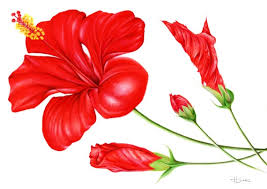The hibiscus is more than just a vibrant flower—it's a symbol of grace, beauty, and health. Found in gardens, parks, and balconies across the world, the hibiscus is known for its bold colors, typically red, pink, yellow, or white, and its large, trumpet-shaped petals that attract not just humans, but also bees and butterflies.
Botanical Wonder
Belonging to the Malvaceae family, hibiscus plants are widely cultivated in tropical and subtropical regions. It thrives in warm climates and grows well with minimal care, making it a favorite among gardeners and plant lovers. The most commonly seen variety is Hibiscus rosa-sinensis, also known as the Chinese hibiscus or shoe flower.
Cultural and Spiritual Significance
In many cultures, hibiscus holds spiritual importance. In India, it's often offered to deities like Lord Ganesha and Goddess Kali. In Hawaii, it’s worn as a symbol of femininity and hospitality. Its cheerful appearance makes it a popular decorative flower during festivals and celebrations.
A Flower Full of Health Benefits
Hibiscus is not just ornamental—it has powerful medicinal properties. The dried petals are used to make hibiscus tea, which is rich in antioxidants and known to lower blood pressure, improve liver health, and aid in weight loss. In Ayurveda, hibiscus is used for promoting hair growth and treating scalp issues. Hibiscus oil and powders are common ingredients in natural hair and skin care products.
Eco-Friendly and Easy to Grow
Hibiscus plants are eco-friendly and pollinator-friendly, attracting bees and butterflies, contributing to a healthy garden ecosystem. They grow easily in pots or soil, require moderate sunlight and water, and bloom beautifully with minimal effort, making them a lovely addition to any home or school garden.
The hibiscus plants in our SCAD campus are adding a touch of beauty and vibrancy to the surroundings. This hibiscus plants are known for their stunning and can really brighten up the college campus.
#hibiscus #SCAD campus


Author
SCAD POLY
2025-04-17